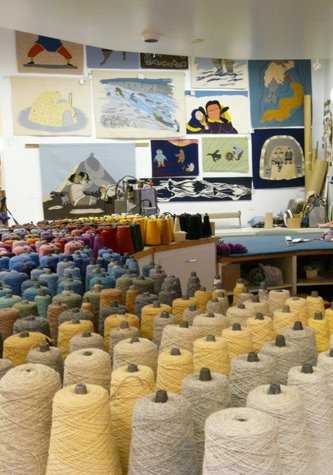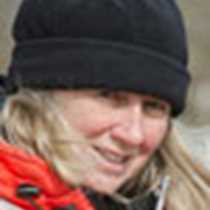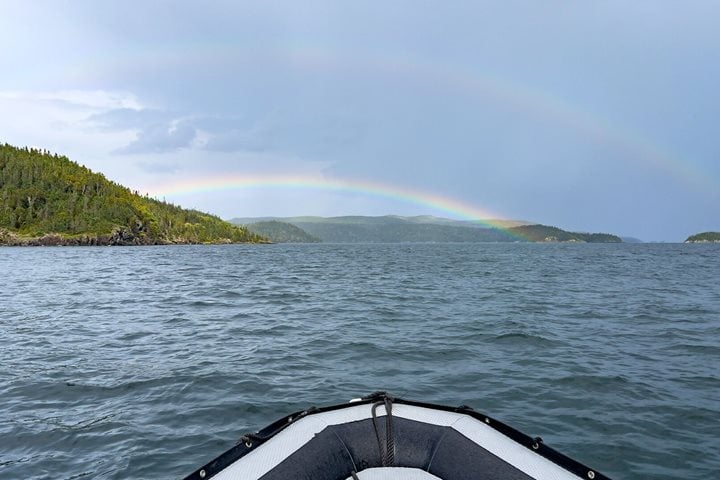At home, when the sea and sky are one-and-the-same shade of gray, we might consider curling up with a book and blanket. When the land is white with new fallen snow and fluffy flakes mingle with raindrops, we might elect to stay inside where it is cozy and warm. But we didn’t. We slipped on layers and pulled on our boots and headed outside instead.
Oh, Canada, you have greeted us back again after a brief sojourn on Greenland’s western shore. A newly dredged harbour and freshly constructed dock welcomed us to the tiny town of Pangnirtung on Cumberland Bay’s northern edge. Its unassuming countenance seemed incongruous with the treasures secreted within. A world-renowned Craft Center produces high quality tapestries, toques, prints, and carvings, many of which found their way into our cabins. A tiny museum explains the Inuit culture and the Parks Canada interpretive center invites adventurers to go beyond, to follow the fjord deep into the interior of Baffin Island.
Caribou stew and bannock bread warmed our innards as we learned how the past and present mingle. Inuit dances blend with whaler’s jigs and the youth still learn and practice physically demanding sports. Young women, once again, playfully compete in laugh producing throat-singing competitions. In spite of the modern dress of our young, enthusiastic guides and a sure feeling that their daily lives are influenced by the electronic age, traditions still remain. Babies still ride tucked in the oversized hoods of their mother’s coats. Families still gather for marine mammal feasts and they enjoy spending time with each other.
Kekerten Historic Park resides on an island about 50 kilometers away. Artifacts from Scottish and American whalers dot the lowland of the island, guarded by a massive bowhead skull. Grasses and wildflowers carpet the crystals of rock. But it was one tiny patch that caught our imaginations most. A children’s playground or the remnants of one rested on a tiny knoll. Here youngsters had constructed their own entertainments while parents toiled nearby. A playhouse of rocks mimicked Inuit summer camp dwellings and a pile of bones turned out to be a most enjoyable game. One was the “dice” with only two faces. Concave was a loser and convex the winning side. The goal: roll the “dice” to win a particular bone and construct a dog team and sledge to capture seals in a lesson of life. Would our children be as creative without their computer games?
Hopefully we will never forget how to play, to make the most of little and to treasure our families and our past and the land we live upon.







